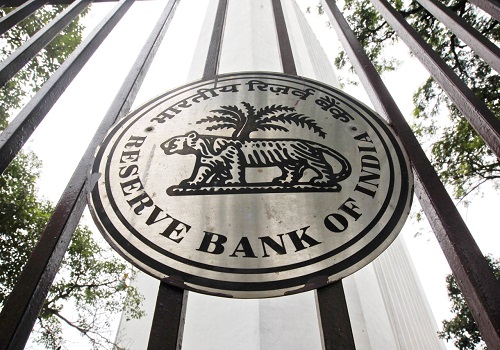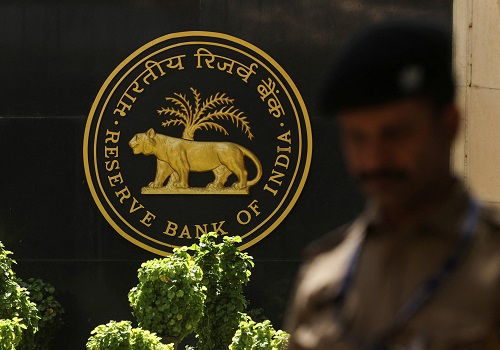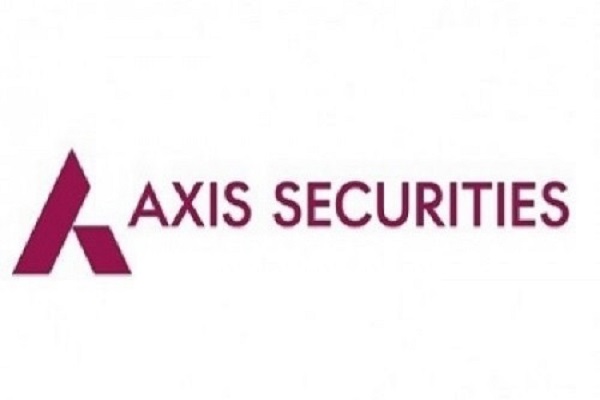Jeera trading range for the day is 23340-24200 - Kedia Advisory

Gold
Gold prices rose by 0.38% yesterday, settling at 66367, as investors eagerly awaited U.S. inflation data to gauge the Federal Reserve's stance on monetary policy. Despite recent high inflation readings, Fed policymakers remain committed to reducing interest rates by three-quarters of a percentage point by the end of 2024. Central banks' continued gold purchases for diversifying currency reserves bolstered market sentiment. Investor attention now turns to the U.S. core personal consumption expenditure (PCE) price index data for February, scheduled for release on Friday, as it could provide crucial insights into inflation trends. Meanwhile, India's gold imports are anticipated to plummet by over 90% in March compared to the previous month, marking the lowest levels since the COVID pandemic. Banks reduced imports due to record-high prices denting demand, potentially curbing a rally in global gold prices. March 2024 gold imports are forecasted to hit their lowest point since the pandemic, attributed to air traffic restrictions limiting imports and lockdowns shuttering jewelry shops. From a technical perspective, the market saw short covering, with a significant drop in open interest by -37.04% to settle at 3812. Prices surged by 253 rupees. Currently, gold finds support at 66090, with a potential further support level at 65815. Resistance is anticipated at 66570, with a potential upward movement towards 66775 upon surpassing resistance levels. This technical overview suggests a cautious stance amid fluctuating market dynamics and awaits further data releases for clearer directional cues.
Trading Ideas:
* Gold trading range for the day is 65815-66775.
* Gold prices edged higher as investors awaited U.S. inflation data
* Fed policymakers indicated they still expect to reduce interest rates by three-quarters of a percentage point by 2024 end
* India's March gold imports set to drop 90% as prices surge
Silver
Silver prices saw a modest increase, settling at 74662, up by 0.19%, propelled by steadfast expectations of a potential interest rate cut by the Federal Reserve in June. Despite uncertainties surrounding inflation, particularly in housing, Chicago Fed Bank President Austan Goolsbee expressed confidence in the fundamental narrative of inflation eventually reaching the 2% target. This sentiment aligns with the Fed's stance, which remains optimistic about inflation easing to the target level despite recent stubborn Consumer Price Index (CPI) data. The market sentiment regarding a potential rate cut in June remains strong, with the CME FedWatch tool indicating a nearly 70% probability of a rate-cut cycle initiation. Although hot consumer price inflation readings last week initially dashed hopes for rate cuts, the release of the latest dot plot, signaling officials' expectation of three rate cuts in 2024, has reignited these expectations. Technically, the market exhibited signs of short covering, with a decline of -1.34% in open interest, settling at 22,732 contracts. Despite this, silver prices surged by 144 rupees. Support levels for silver are identified at 74395, with a potential test at 74135. Conversely, resistance is expected at 74880, with a breakthrough potentially leading to a test of 75105 levels. Investors eagerly await the release of the U.S. Federal Reserve's preferred inflation indicator and public comments from Fed Chair Jerome Powell, scheduled for Friday, which are anticipated to offer additional insights into the Fed's rate trajectory.
Trading Ideas:
* Silver trading range for the day is 74135-75105.
* Silver gains as the Fed will cut interest rates in June remain firm
* The Fed appears confident that inflation is easing toward the 2% target.
* Atlanta Federal Reserve Bank President Raphael Bostic said he expects just a 25-bps Fed cut in 2024.
Crude oil
Crude oil prices experienced a decline of -0.6% yesterday, settling at 6776, primarily driven by surging U.S. stockpiles and indications that the OPEC+ group is unlikely to alter its output policy at an upcoming technical meeting. The Energy Information Administration (EIA) reported an increase in U.S. crude stocks and gasoline inventories, with crude inventories rising by 3.2 million barrels to 448.2 million barrels. Additionally, crude stocks at the Cushing, Oklahoma delivery hub surged by 2.1 million barrels. Market sources, citing American Petroleum Institute figures, noted a significant rise of 9.3 million barrels in U.S. crude oil inventories for the same period, while distillate inventories rose by 531,000 barrels and gasoline stocks declined by 4.4 million barrels. The Organization of the Petroleum Exporting Countries (OPEC) and its allies, including Russia, are expected to maintain existing output cuts until a full ministerial meeting in June. OPEC+ agreed earlier this month to extend output cuts of approximately 2.2 million barrels per day (bpd) until the end of June, although efforts to address over-production have been required from countries like Russia and Iraq. From a technical standpoint, the market observed long liquidation, evidenced by a notable drop in open interest by -12.77% to settle at 2971, alongside a decline in prices by -41 rupees. Currently, crude oil finds support at 6732, with a potential further support level at 6689. Resistance is anticipated at 6809, with a potential upward movement towards 6843 upon breaching resistance levels.
Trading Ideas:
* Crudeoil trading range for the day is 6689-6843.
* Crude oil prices fell on surging U.S. stockpiles
* Crude inventories rose by 3.2 million barrels to 448.2 million barrels - EIA
* US crude inventories rose 9.3 mln bbls week ended March 22 - API
Natural gas
Natural gas prices experienced a significant decline, settling at 144.4, marking a decrease of -4.18%. This downturn was primarily driven by forecasts indicating milder weather and reduced heating demand for the upcoming week, coupled with ample gas supplies in storage. Additionally, lower gas flows to liquefied natural gas (LNG) export plants due to maintenance work at Freeport LNG's export facility in Texas exerted downward pressure on prices. According to financial firm LSEG, gas production in the Lower 48 U.S. states has dwindled to an average of 100.2 billion cubic feet per day (bcfd) in March, down from 104.1 bcfd in February. This decline, exacerbated by extreme cold weather in North Dakota and some Rocky Mountain states, led to frozen oil and gas wells, further constraining output. Energy firms such as EQT and Chesapeake Energy contributed to the output decline by delaying well completions and reducing drilling activities. Technically, the market witnessed fresh selling pressure, with a notable 16.18% increase in open interest, settling at 60,855 contracts. Prices saw a significant decline of -6.3 rupees. Support levels for natural gas are identified at 141.7, with potential testing at 139.1. Conversely, resistance is expected at 148.5, with a breakthrough possibly leading to a test of 152.7 levels.
Trading Ideas:
* Naturalgas trading range for the day is 139.1-152.7.
* Natural gas slid on forecasts for milder weather and less heating demand next week
* The Freeport LNG export plant in Texas has announced that two of its three liquefaction trains will be offline until May.
* Gas output in the Lower 48 U.S. states fell to an average of 100.3 bcfd so far in March, down from 104.1 bcfd in February.
Copper
Copper prices saw a modest increase of 0.18% yesterday, settling at 759.05, amid growing concerns regarding the resilience of the Chinese economy, particularly in light of weak consumer sentiment and challenges within the debt-laden property sector. The industrial sector in China, the world's largest consumer of copper, continued to display signs of sluggishness, as reflected in the seventh consecutive decline in factory activity according to official manufacturing PMI data. Worries over the Chinese economy's ability to sustain demand weighed on copper markets, with stocks of deliverable copper remaining steady and the Yanghsan copper premium sharply lower, indicating reduced demand for physical copper from factories. Additionally, rising inventories in LME-approved warehouses added to the downward pressure on copper prices, reaching the highest levels since February 29. Despite these challenges, copper inventories in SHFE-tracked warehouses saw a slight decline for the first time since December 22, albeit still remaining elevated due to strong Chinese production and imports. Chinese refineries have yet to scale back production significantly in March, with consumption showing a gradual recovery. However, signs of inventory accumulation easing suggest a potential turnaround. Looking ahead, market focus will be on the pace of maintenance activities by Chinese smelters in the second quarter, which could further impact supply dynamics. From a technical standpoint, the market witnessed short covering, with a drop in open interest and a price increase of 1.35 rupees. Copper is currently finding support at 755.6, with potential further support at 752, while resistance is expected at 761.2, with a potential upward movement towards 763.2 upon breaching resistance levels.
Trading Ideas:
* Copper trading range for the day is 752-763.2.
* Copper settled flat amid looming concerns over the resilience of the Chinese economy
* Prices pressured by rising LME inventories, which were last at 117,900 tons, the highest since Feb. 29.
* The discount of LME cash copper to the three-month contract expanded to $115.37 a ton, the biggest discount since at least 1982.
Zinc
Zinc prices experienced a slight decline, settling at 216.75, down by -0.34%. This dip was influenced by the shift in the global zinc market from a deficit to a surplus of 58,700 metric tons in January, according to data from the International Lead and Zinc Study Group (ILZSG). The surplus contrasts sharply with previous months, notably January 2023, when a surplus of 54,000 tons was recorded. Additionally, exchange stocks of zinc in Shanghai increased slightly, nearing last year's seasonal build levels. The market faced further supply disruptions as Glencore Plc halted operations at its McArthur River zinc and lead mine in Australia due to heavy rainfall. This suspension may exacerbate the tight supply of zinc concentrates, essential for refined zinc production, primarily used in galvanizing steel. Moreover, Peruvian zinc, lead, and silver miner Volcan suspended operations at three mines to update permits for its Rumichaca tailings dam, contributing to supply constraints. Technical analysis indicates fresh selling pressure, with a marginal increase of 0.03% in open interest, settling at 3413 contracts. Prices witnessed a decline of -0.75 rupees. Support levels for zinc are identified at 215.7, with potential testing at 214.5, while resistance is anticipated at 217.6, with a potential breakthrough leading to a test of 218.3 levels. Investors should closely monitor supply disruptions and market dynamics, as these factors will continue to influence zinc prices. Additionally, tracking technical indicators and key support and resistance levels will aid in navigating market movements effectively amidst evolving conditions in the zinc market.
Trading Ideas:
* Zinc trading range for the day is 214.5-218.3.
* Zinc dropped as global zinc market moved to a surplus of 58,700 metric tons in January.
* Glencore Plc has halted operations at its McArthur River zinc mine in Australia following heavy rainfall
* Exchange stocks of zinc in Shanghai crept a little higher in the week to 121,873 tons
Aluminium
Aluminium prices edged up by 0.36% yesterday, settling at 207.7, amid concerns regarding the sluggish recovery in production in China's Yunnan province. However, the upside was capped due to expectations of easier monetary policy domestically and a strengthening dollar. Investors remained cautious, awaiting signals indicating a recovery in demand from China, the world's top metals consumer. Market sentiment was influenced by worries over the slow pace of aluminium smelter restoration in Yunnan province, where dry weather conditions continue to hamper hydropower supply, limiting production capacity. In Japan, a notable increase in aluminium premiums was observed, with a buyer agreeing to pay $145 per metric ton over the benchmark price for shipments in April to June, marking a 61% rise from the current quarter. Global primary aluminium output in February witnessed a 3.9% year-on-year rise, reaching 5.544 million tonnes, according to data from the International Aluminium Institute (IAI). Meanwhile, the share of available aluminium stocks of Russian origin in LME-approved warehouses increased to 91% in February, indicating a notable presence of Russian aluminium in the market. Additionally, the amount of Russian primary aluminium stocks on LME warrant also rose during the same period. From a technical perspective, the market observed short covering, with a drop in open interest and a price increase of 0.75 rupees. Currently, aluminium finds support at 206.9, with potential further support at 205.9, while resistance is expected at 208.4, with a potential upward movement towards 208.9 upon breaching resistance levels.
Trading Ideas:
* Aluminium trading range for the day is 205.9-208.9.
* Aluminium gains amid concerns over slow recovery in production in China's Yunnan province.
* Investors waited for signals that demand was recovering in top metals consumer China.
* Montefusco cited market concerns about the pace of aluminium smelters in draught-hit Yunnan province restoring 500,000 metric tons of annual production
Cotton
Cotton candy prices witnessed a decline, settling at 62080, down by -0.7%, driven by revised production estimates and increased supply expectations. The Cotton Association of India (CAI) revised its cotton production estimate upwards for the current season, reaching 309.70 lakh bales, while the Cotton Crop Promotion Council (CCPC) raised its production estimate to 323.11 lakh bales. These upward revisions contributed to increased market supply forecasts, pressuring prices downwards. Additionally, the Southern India Mills' Association (SIMA) urged textile mills to refrain from panic buying amid recent price hikes, indicating a potential stabilization in demand. Global cotton supply and demand estimates for 2023/24 also showed higher production and consumption, with lower ending stocks. Despite lower U.S. and Argentine crops, increased production in India offset the decrease, leading to higher global production. However, increased consumption in China and India balanced the equation, resulting in marginally lower ending stocks. Technically, the market observed fresh selling pressure, with a 2.11% increase in open interest, settling at 436 contracts. Prices dropped significantly by -440 rupees. Support levels for cotton candy are identified at 61960, with potential testing at 61830, while resistance is expected at 62260, with a potential breakthrough leading to a test of 62430 levels.
Trading Ideas:
* Cottoncandy trading range for the day is 61830-62430.
* Cotton dropped as CAI revised production estimates upwards to 309.70 lakh bales.
* CCPC raised crop production for the current season to 323.11 lakh bales
* Cotton Australia raised its estimate for Australian production this year to "at least" 4.5 million bales
* In Rajkot, a major spot market, the price ended at 29071.7 Rupees dropped by -0.33 percent.
Turmeric
Turmeric prices experienced a slight decline of -0.26% yesterday, settling at 17420, primarily due to profit booking after recent gains supported by below-normal supplies and active festive demand. Despite this pullback, prevailing supply tightness continues to support prices, with arrivals significantly lower compared to the previous year, indicating subdued production levels. The impact of lower production is evident, with arrivals in major APMC markets in March significantly reduced compared to the previous year, reinforcing the scarcity in the market. Stockists are likely to capitalize on supply constraints by purchasing turmeric at every dip in prices, further supporting price stability. Turmeric's seasonal price trend suggests higher prices during March due to festive buying, with upcoming festivals and the commencement of the wedding season expected to sustain active buying interest. Production is anticipated to decline by about 14% year-on-year due to reduced cultivation area and tumbling yields, estimated to range between 9.2-9.5 lakh tonnes. In terms of trade dynamics, turmeric exports during April-January 2024 witnessed a marginal decrease of 3.52% compared to the same period in the previous year. However, imports saw a notable decline of 22.34% during the same period, indicating a shift in trade dynamics. From a technical standpoint, the market observed long liquidation, with a drop in open interest by -1.2% to settle at 14030, alongside a decrease in prices by -46 rupees. Currently, turmeric finds support at 17182, with potential further support at 16946, while resistance is expected at 17706, with a potential upward movement towards 17994 upon breaching resistance levels.
Trading Ideas:
* Turmeric trading range for the day is 16946-17994.
* Turmeric dropped on profit booking after prices seen supported amid below normal supplies
* Festivals ahead in coming months and commencement of wedding season demand is likely to keep buyers engage.
* Production is likely to be dropped by about 14% Y-o-Y due to lower area under turmeric.
* In Nizamabad, a major spot market, the price ended at 16527.65 Rupees gained by 0.7 percent.
Jeera
Jeera prices surged by 1.36%, settling at 23860, driven by reduced arrivals in Unjha, where cumin arrivals decreased to 35-37 thousand bags. This reduction in arrivals coupled with record-high acreage in key producing states like Gujarat and Rajasthan supported the upward momentum. Farmers expanded cultivation driven by favorable prices from the previous marketing season, indicating a strong correlation between market prices and acreage. Additionally, concerns over adverse weather conditions in Rajasthan and Gujarat added to the bullish sentiment. However, despite the bullish domestic factors, global demand for Indian jeera declined as buyers favored alternative origins like Syria and Turkey due to higher prices in India. Export volumes dropped by 25.33% during Apr-Jan 2024 compared to the same period last year, although January 2024 saw a slight uptick compared to December 2023 and a significant increase compared to January 2023. Challenges such as lower water availability, climate-related issues, and pest attacks continue to pose threats to production. Technically, the market observed short-covering, with a decrease of -0.98% in open interest, settling at 2724 contracts. Despite the upward movement in prices by 320 rupees, support levels for jeera are identified at 23610, with potential testing at 23340, while resistance is expected at 24040, with a potential breakthrough leading to a test of 24200 levels. Investors should closely monitor weather conditions, export trends, and pest-related challenges, as these factors will continue to influence jeera prices.
Trading Ideas:
* Jeera trading range for the day is 23340-24200.
* Jeera gains as in Unjha, the arrival of cumin has reduced to 35-37 thousand bags
* There will be a huge increase in cumin exports, which will reach about 14-15 thousand tonnes in February 2024.
* New arrivals have started in Gujarat since last 20-25 days and new arrivals have started in Rajasthan also since last 15 days.
* In Unjha, a major spot market, the price ended at 25906.7 Rupees dropped by -0.55 percent.
Views express by all participants are for information & academic purpose only. Kindly read disclaimer before referring below views. Click Here For Disclaimer






















